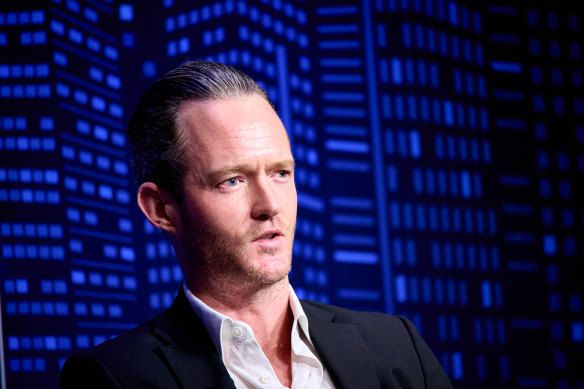Save articles for later
Add articles to your saved list and come back to them any time.
Property developer Tim Gurner says employees have become too arrogant, and that unemployment must rise substantially to lift productivity, especially in the construction sector.
Gurner told a business event on Tuesday the pandemic had a “massive effect” on productivity, especially among tradies, and that it was worsening the housing crisis.
Property developer Tim Gurner said unemployment needed to rise by between 40 and 50 per cent.Credit: Michael Quelch
“They have been paid a lot to do not too much in the last few years, and we need to see that change,” he told the AFR property summit in Sydney. “I think the problem that we’ve had is that people decided they didn’t really want to work so much any more through COVID.”
Gurner refuted the assertion that immigration was worsening the housing crisis.
“We absolutely have to have immigration,” he said. “Australia doesn’t work without immigration and if we’re not growing, we’re dead.”
The dynamic between employers and employees had to change through a 40 to 50 per cent jump in unemployment, Gurner said.
‘We need to see pain in the economy. We need to remind people that they work for the employer, not the other way around.’
“We need to see pain in the economy. We need to remind people that they work for the employer, not the other way around. There’s been a systematic change where employees feel the employer is extremely lucky to have them, as opposed to the other way around. It’s a dynamic that has to change.”
Despite 12 interest rate increases in the past 16 months, the labour market has remained relatively resilient.
The unemployment rate reached a record low of 3.4 per cent in July last year and has remained at historically low levels. In July this year, unemployment was at 3.7 per cent according to the Australian Bureau of Statistics’ latest set of data.
In June, Reserve Bank deputy governor Michele Bullock warned the jobless rate would need to climb to 4.5 per cent to tame inflation, implying about 140,000 people could lose their jobs.
On Tuesday, CBA chief economist Stephen Halmarick said there was a shortfall in dwelling construction in Australia.
“You need annual dwelling construction of about 230,000 or 240,000 a year,” he said. “We’re running at about 160,000.”
Gurner said the supply of housing also needed to be increased by improving the planning system, which he said was “fundamentally broken” in Sydney.
“That is just an absolute no-brainer,” he said. “I can’t understand how one of the best cities in the world has a planning system that just doesn’t work. Melbourne’s planning system is OK. It’s slow, but at least you can come through VCAT [Victorian Civil and Administrative Tribunal] and you can actually put a date in a program and a feasibility.”
Gurner, who was ranked 154th on the AFR’s Rich List with $912 million, also said incentives needed to be realigned.
“It just comes back to stamp duty taxes,” he said. “When you look at the percentage of taxes across a property, it’s over 50 per cent. People say, ‘Why is housing so expensive?’ Well, 50 per cent plus is taken up in stamp duty and taxes. There is only so much developers can do to fix that issue.”
The Business Briefing newsletter delivers major stories, exclusive coverage and expert opinion. Sign up to get it every weekday morning.
Most Viewed in Business
From our partners
Source: Read Full Article
